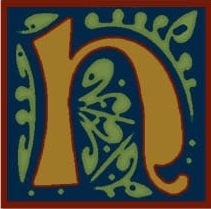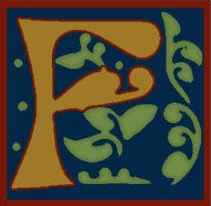This school year, I have been the student assistant to our choir director, which also means getting some conducting experience. Quien Fuera Como El Jazmin by Argentinian composer Carlos Guastavino is the first piece I’ve conducted, so it will always have a special place in my heart.
Category Archives: music
P is for… Peter and the Wolf
N is for… Nabucco

I can already hear a few of you going “what?” Nabucco is an opera by Giuseppe Verdi. Great opera about the Babylonian king Nebuchadnezzar and his rule over the Israelites. There is one piece in particular that I want to highlight and that is Va, pensiero (The Chorus of the Hebrew Slaves).
In this piece, the chorus of slaves sings about a longing to return home, thinking about the good times they had surrounded by family and praying that they will see their homeland before their life is through. Very appropriate words written by an accomplished librettist and set to music so elegantly by Verdi. But the piece (likely unintentionally) became a rallying point for the Italian people in Verdi’s time. The country was not yet the unified nation that we know today and parts were still under the control of neighboring empires. Va, pensiero echoed with the people when Nabucco opened and the song remains a treasure to Italians to this day.
M is for… Mendelssohn
Ah, Felix Mendelssohn. You know, that lovely Wedding March we’ve all heard a bazillion times?
Yup, that’s him. That Wedding March is from Mendelssohn’s Incidental Music for Shakespeare’s A Midsummer Night’s Dream. (One of my favorite plays, actually!)
I am sharing some of my favorite Felix Mendelssohn works here. Not sure how familiar you are with them, but I would love to know what you think! If you are a fan of Felix and I haven’t posted your favorite of his works, please share below!
Violin Concerto in E minor, Op. 64
A Midsummer Night’s Dream Overture
Italian Symphony
L is for… Liszt.
I know, I am a day late. Welcome to yet another busy weekend. I even had a contingency plan to get this post up yesterday and it failed. *sigh*
So, we had a lecture on Liszt this week in class. About an hour on Liszt alone, mostly about his transcriptions of Paganini and his ridiculous piano works. We watched this:
…and this:
Later that day, I saw a fun post from my friend and classmate Andrew Wilcox on Facebook. I asked him if I could share it in my blog and he said yes, so the rest of this is him! (Thank you, Andrew!)
I’m not sure how anyone can talk about Franz Liszt for over an hour without specifically mentioning Hungarian Rhapsody no. 2, one of the most beloved pieces of cartoon characters and even live-action comedians of the early-mid 20th century.
If that piece doesn’t ring a bell, never fear! I’ve compiled a small Liszt of appearances the piece has made in both animation and film. Pun very much intended.
K is for… Kill the Wabbit!
I know I am a day late on this. Never really had enough down time yesterday to get this posted and this was one of the letters I was still trying to figure out. I had the idea when I woke up yesterday, but didn’t get the time to post it.
This is just a fun break from the serious musical posts…
We will be talking about Wagner when we get to letter W, but I was watching this the other day and had to share it!
J is for… The Joke
Haydn String Quartets Op. 33 No. 2 Mvmt. 4 “The Joke”
This string quartet is written in what is called the rondo form. The rondo is so called because it’s got sort of a circular form: you start with a distinct musical idea in one section (A), introduce a section with a new motive (B), return to your first idea, introduce another new motive (C), and then finish by returning again to your first idea (ABACA form).
At the end of the rondo, Haydn implements a joke in this piece. Can you catch it? During Haydn’s time period, it has been said that audiences would erupt in laughter at the humorous coda.
H is for… Handel
Odds are that if I said “Handel”, this is what you’d think of:
There’s nothing wrong with immediately thinking of the Hallelujah Chorus and the work it comes from. The Messiah is Handel’s most famous work and it is worth the attention and adulation. But there is much more to George Frideric Handel.
Handel wrote 46 operas during his lifetime. His opera debut in England was Rinaldo and one of his most famous arias, Lascia Ch’io Pianga, comes from this opera.
Ready for a short musical form lesson? Lascia Ch’io Pianga is an example of da capo aria. In simplest terms, there are two refrains: A & B. The A section is sung, the B section is sung, and then the A section is repeated, with embellishments.
One of my favorite pieces by Handel is movement 4 of his Suite in E major for harpsichord. His title for the movement was Air and Variations, but it has become more popularly known as The Harmonious Blacksmith.
While the harpsichord original is beautiful, I have become quite a fan of the guitar transcription.
G is for… Gounod
I was going to compare the Ave Maria by Charles Gounod with the one by Franz Schubert, but I thought better of that idea. So, here is one little fact that may be unknown to some: Gounod’s Ave Maria is actually a melody by him set over a Bach prelude.
Little facts aside, this is my own personal taste and opinion here. While I enjoy both of these Ave Marias, I am definitely more a fan of the Gounod/Bach work than the Schubert. I don’t know if that’s just because I have heard the Schubert one done so much (and not always done well). I have performed the Schubert. I would love to perform the Gounod/Bach. I also think that the Gounod/Bach would be a more difficult piece and that is a challenge I would love to conquer!
Here are both versions, sung by the same voice (Chloë Agnew of Celtic Woman fame). The first is the Gounod/Bach and was recorded in 2004, when Agnew was 15 years old. The second video, the Schubert, was recorded in 2011, when Agnew was 22. Both are beautiful recordings to be sure, but I still prefer the Gounod/Bach.
F is for… Fantasia
I think that like most of us, my earliest introduction to classical music was Disney’s “Fantasia.” I found myself becoming a fan of Ponchielli while watching hippos and alligators dance.
Not only did I get my introduction to Roman mythology, but I heard the sweet sounds of Beethoven’s Pastoral Symphony.
In 2000, Disney followed up with Fantasia 2000. I was personally thrilled with the Rhapsody In Blue segment – Gershwin’s orchestrated jazz rhapsody had long been a favorite of mine. But I was also introduced to Stravinsky’s Firebird Suite, which is apparently one of my mom’s favorite works.
I also fell in love with Saint-Saëns thanks to the hijinx of a crazy flamingo and his yoyo 🙂
Granted, much of the music used in the Fantasia films was abridged or arranged to fit the visualizations the artists conceived, but it was still an introduction to classical music for so many.
What are your Fantasia memories?
EDIT: In view of the two lovely comments already added to this post, let me change the question: What are your early musical memories?








